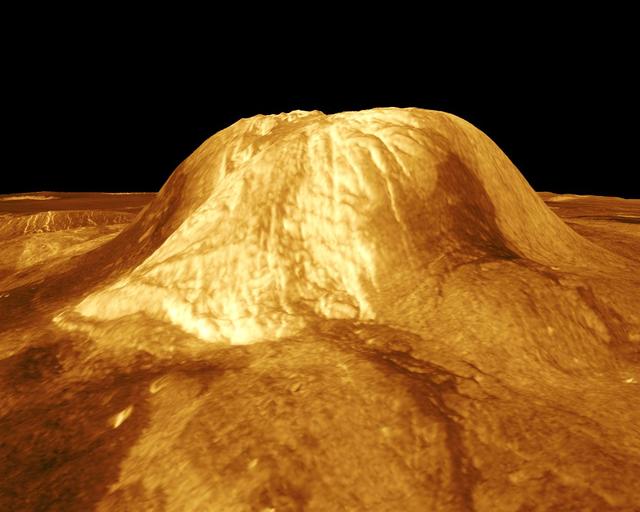Imagine a planet so strikingly similar to Earth that, for decades, astronomers believed it might be our celestial twin. Nearly identical in size, composed of rock, and cloaked in a thick atmosphere, it seemed a promising candidate for a second home. Yet, with the advent of modern technology allowing us to peer beneath its dense cloud cover, a stark and brutal reality emerged. This once-hopeful twin is, in truth, a planetary inferno. This is Venus.
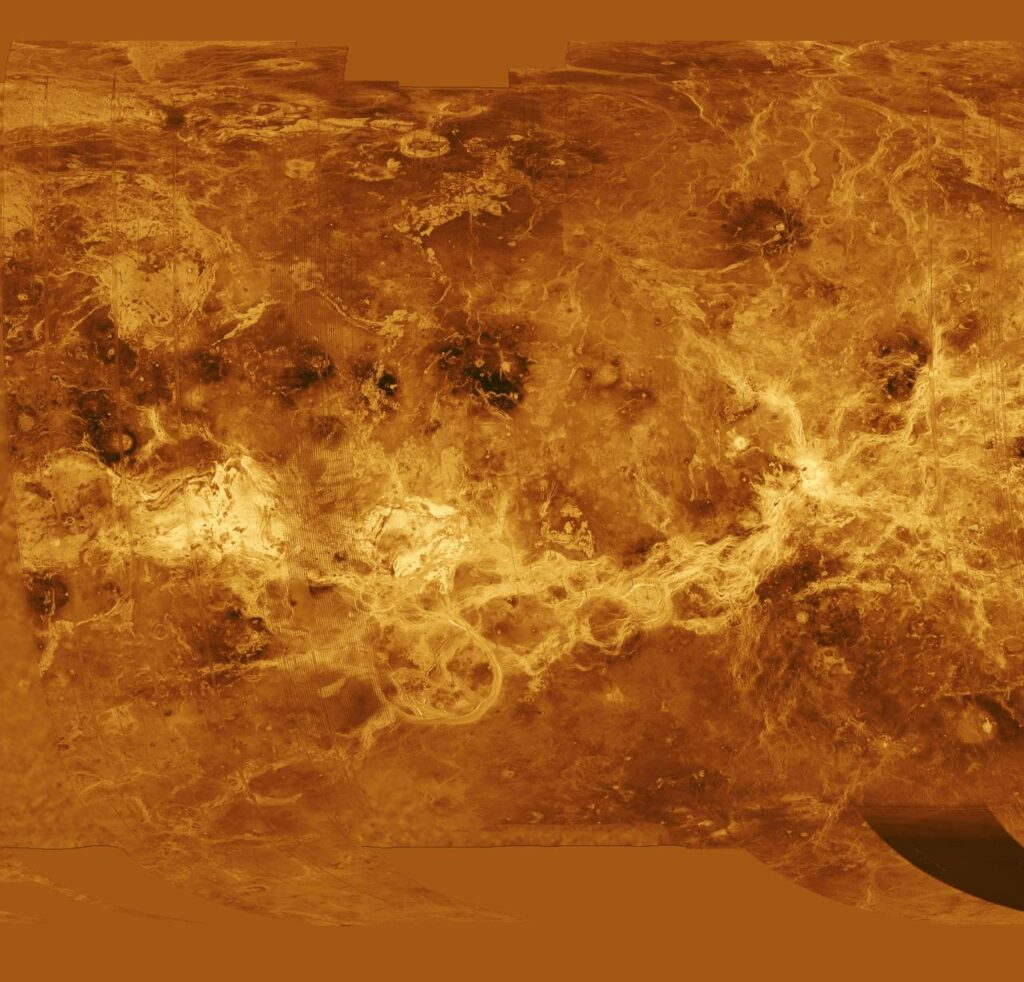
The second planet from the Sun, Venus orbits at an average distance of 108 million kilometers—relatively close to Earth. In the night sky, it outshines all celestial objects except the Moon. But behind this radiant facade lies a suffocating truth.
Venus’ atmosphere is oppressively thick, composed almost entirely of carbon dioxide, and shrouded in corrosive clouds of sulfuric acid. Unlike Earth’s clouds, which reflect and regulate heat, those of Venus have triggered a runaway greenhouse effect. The surface temperature reaches a staggering 470°C—hot enough to melt lead—making it even hotter than Mercury, despite being farther from the Sun.
This infernal heat is unrelenting. With no real diurnal temperature shift, the planet functions like an eternal industrial furnace. Yet high temperatures are only part of the hostility. Atmospheric pressure at the surface is 92 times that of Earth at sea level—equivalent to being 900 meters underwater. Any unprotected living being would be crushed in seconds; even machines require extraordinary engineering to survive for mere minutes.
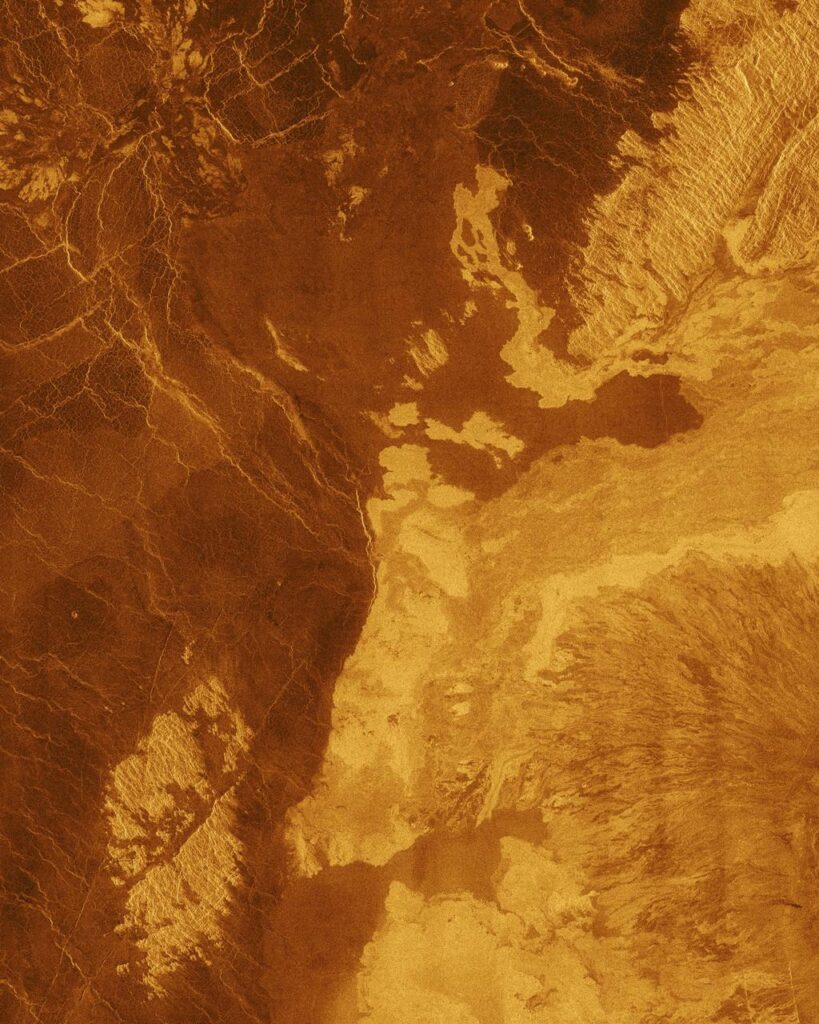
Adding to the adversity is sulfuric acid rain. While it evaporates before reaching the ground, it still poses a serious threat to any equipment operating in the upper atmosphere. Venus also lacks liquid water. Its surface is a chaotic landscape of volcanic plains, twisted highlands, and fissured terrain—eerily reminiscent of a nightmarish alien world. Thick clouds block most sunlight, plunging the surface into a perpetual orange dusk, devoid of stars, blue sky, or any familiar celestial marker. It is, in essence, a toxic, pressurized furnace.
So if we have landed on the Moon, sent rovers to Mars, and dispatched probes to the outer reaches of the Solar System—why have we never set foot on Venus?
Venus and Mars are Earth’s closest planetary neighbors. At its nearest, Venus lies only 40.5 million kilometers away—closer than Mars’ 55 million. A spacecraft can reach Venus in just 100 days. In theory, this proximity should make it a more accessible target. Yet in practice, Venus remains largely ignored in favor of Mars. Why?
Bright enough to command human fascination since antiquity, Venus has long stood out in our sky. As observational techniques improved, its Earth-like size, mass, and density further stoked the imagination. For a time, many believed Venus might be teeming with life.
However, its dense atmosphere rendered telescopic surface observations impossible, prompting intense interest in robotic exploration. In 1961, the Soviet Union launched Venera 1, the first human-made probe aimed at Venus. Though it failed due to overheating sensors, it marked the beginning of an ambitious exploration era.
The United States followed with Mariner 2 in 1962, achieving the first successful Venus flyby at a distance of just 35,000 kilometers. But the data it returned was sobering—surface temperatures exceeding 400°C. Life, it seemed, could not exist there.
Despite this, exploration continued. From 1961 to 1983, the Soviet Union launched 28 Venus missions. Thirteen entered the atmosphere, and eight achieved landings. Venera 9, in 1975, returned the first image of Venus’ surface. Venera 13, in 1982, sent back the first color photograph.

Venus is essentially isothermal: whether at the equator or poles, atop mountains or within valleys, the surface remains a uniform 464°C. No “cooler” regions exist. Any probe would face the same infernal conditions regardless of its landing site.
The atmosphere’s sulfuric acid, condensing into droplets and evaporating before reaching the ground, creates a vast acidic envelope above the surface. The combination of extreme heat, crushing pressure, and chemical aggression has earned Venus its moniker: “the hell planet.” Even the sturdiest probes survive for mere hours. Venera 13 holds the record—127 minutes.
Given such cost and peril, with minimal scientific return, manned Venus missions have been shelved since the 1980s. Today, exploration relies on orbital or flyby missions. Until we develop technologies that can endure Venus’ fury, a return to the surface remains out of reach.
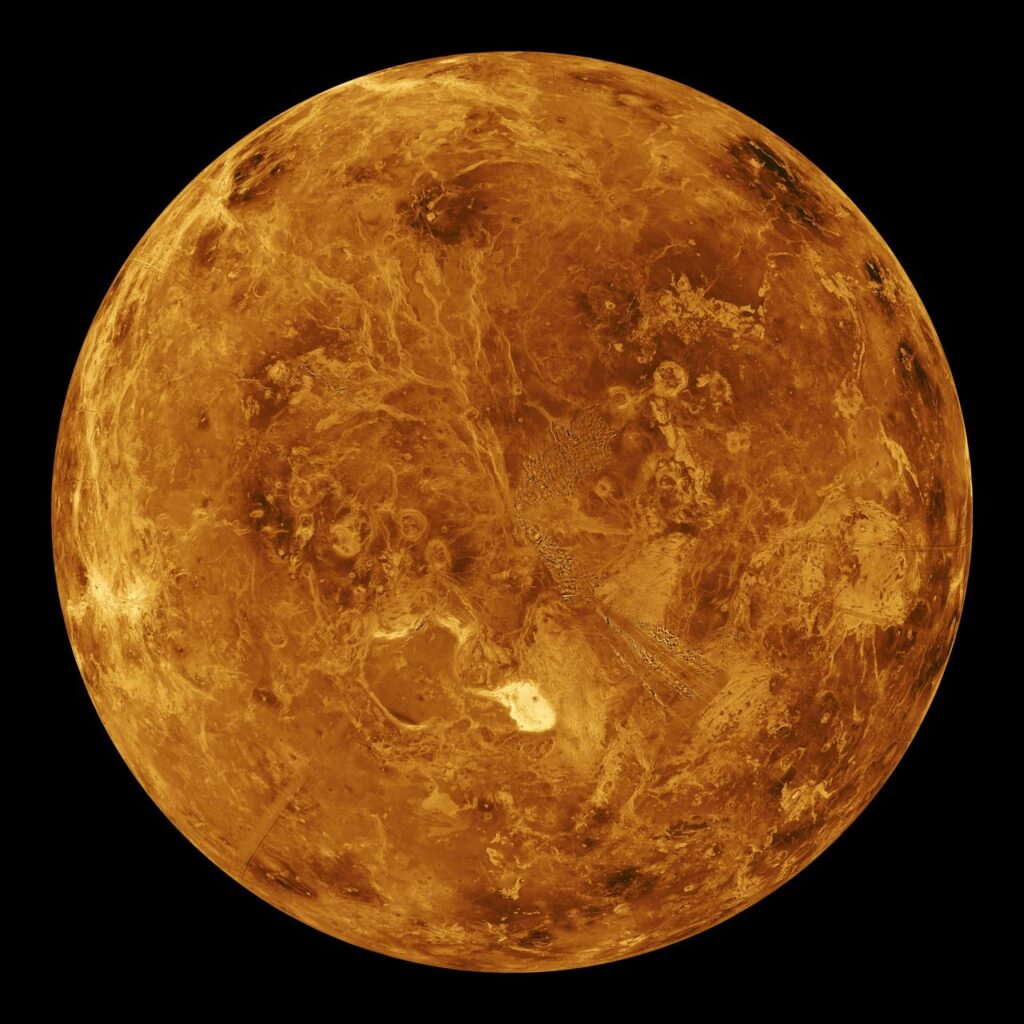
By contrast, Mars—despite being farther away and inhospitable—offers a more favorable setting. Rovers can function for years. Enclosed habitats are theoretically feasible. Thus, Mars has become humanity’s prime candidate for interplanetary settlement.
Venus, on the other hand, might have once been Earth-like. It’s only 5% smaller, and both planets share a rocky composition, internal layering, and gravitational profile. Some scientists suspect Venus once had oceans, weather patterns, and even plate tectonics—until its climate veered off course.
Venus rotates slowly and retrograde, taking an average of 243 Earth days to complete one turn. This variable rate continues to baffle scientists, complicating efforts to define a standard “day.” But Venus’ unsuitability for life doesn’t stem solely from its rotational quirks. Its carbon dioxide–rich atmosphere, overwhelming pressure, and 864°F surface temperature are collectively catastrophic for life as we know it.
Still, Venus is often called Earth’s twin. Why? Because billions of years ago, it may have been just that—a blue, wet, habitable planet. Its placement in the habitable zone, similar geologic history, and capacity for carbon cycling support this idea. But as the Sun’s luminosity gradually increased—by 10% every billion years—Venus’ climate began to unravel.
Oceans evaporated. Water vapor, a potent greenhouse gas, trapped more heat. The carbon cycle collapsed. Volcanic outgassing of CO₂ accelerated. Eventually, even hydrogen and oxygen escaped into space. What remained was a thick, choking blanket of carbon dioxide, locking Venus into perpetual, irreversible overheating.
This fate may foreshadow Earth’s. In a billion years, rising solar output could initiate the same process here: evaporated oceans, runaway greenhouse effects, planetary suffocation. Unlike Venus, Earth’s geology and biosphere may delay the process. But unless emissions are curbed, we may unwittingly hasten it.
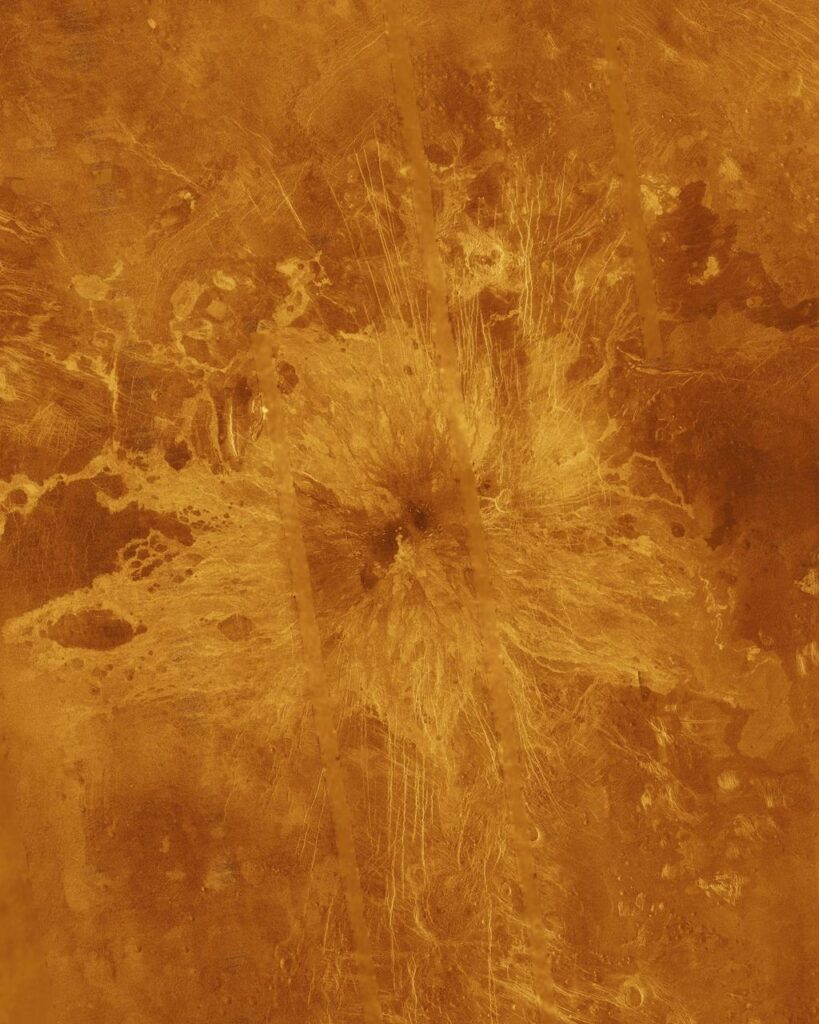
Some scientists propose alternative causes for Venus’ downfall—massive internal shifts, or a close gravitational encounter with another planetary body. These remain speculative. What’s certain is this: Venus is a cautionary tale written in the language of planetary physics.
The irony is cruel. Venus is closer, cheaper to reach, and in many ways more familiar than Mars. Yet it rejects our every advance. It draws us in with resemblance—then repels us with hostility. And so, we keep our distance, launching probes, gathering data from afar, and imagining new strategies. But the surface remains forbidden.
In the end, Venus forces us to look homeward. It reminds us that Earth is a rare oasis in a hostile cosmos—a fragile sanctuary surrounded by fire and void.
If Venus were not so merciless, it might already have been absorbed into humanity’s interplanetary ambitions. It is the closest planet to Earth and nearly identical in size—only 5% smaller. Its internal structure also mirrors Earth’s: a core, mantle, and crust, all suggestive of terrestrial kinship.
Yet crucial differences remain. One of the most significant is Venus’ apparent lack of active plate tectonics, a hallmark of Earth’s geological dynamism. Evidence suggests Venus may have once possessed such processes, but they appear to have stagnated, possibly due to changes in planetary heat flow or mantle viscosity. Still, the planet diverges from Earth in far more radical ways.
Its rotation, for instance, is one of the strangest in the solar system. A single Venusian day spans 243 Earth days—longer than its orbital year—and rotates in a direction opposite to most planets. Even more perplexing, its rotation rate is variable, making it difficult for scientists to define a precise “day” at all.
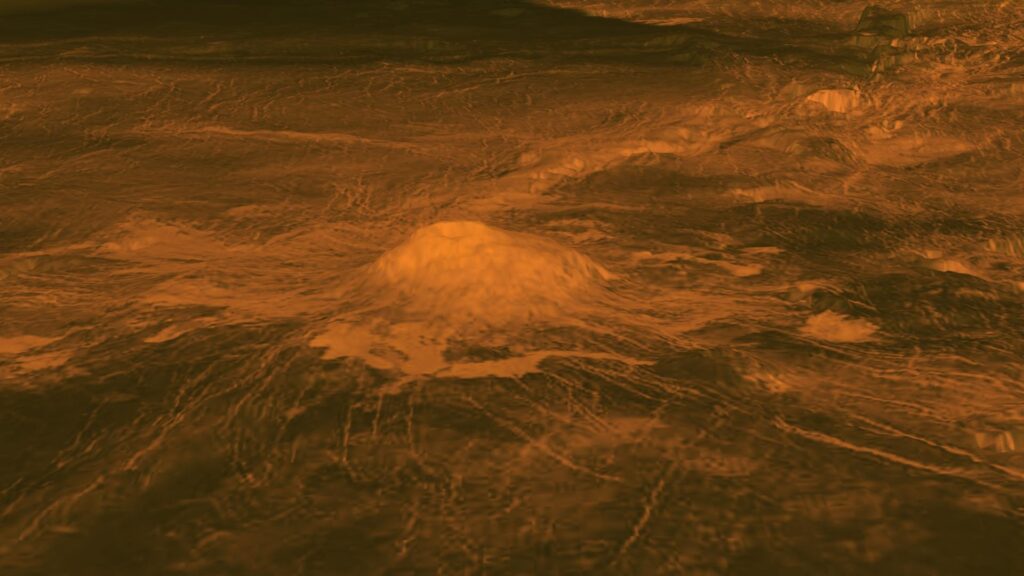
But of course, Venus’ inhospitality stems from more than just its strange rotation. Its suffocating atmosphere, composed almost entirely of carbon dioxide, exerts over 90 times Earth’s surface pressure. Temperatures soar to 864°F (462°C)—high enough to incinerate most electronics within moments. Under such extremes, even robust rover components fail almost immediately.
So why, despite these brutal conditions, do we still refer to Venus as Earth’s twin? The answer lies in its ancient past.
Many scientists believe that Venus, billions of years ago, may have once harbored a temperate climate, liquid oceans, and even a sky tinged with blue. It may have rested comfortably within the early habitable zone of the solar system, and its geological history hints at a once-active carbon cycle not unlike our own.
At some point, however, things began to unravel.
As the Sun aged, its luminosity slowly increased—by about 10% every billion years. For Venus, already closer to the Sun, this meant an inexorable rise in surface temperatures. Its oceans began to evaporate. Water vapor, being a potent greenhouse gas, thickened the atmosphere and trapped more heat. A vicious feedback loop ensued.
With no plate tectonics to regulate carbon sequestration, volcanic eruptions added massive quantities of CO₂ into the atmosphere, which, without oceans to absorb it, accumulated unchecked. Water vapor was eventually broken apart by ultraviolet sunlight, with hydrogen escaping into space—a process known as hydrodynamic escape. The carbon cycle collapsed. Venus dried out and descended into a permanent greenhouse state.
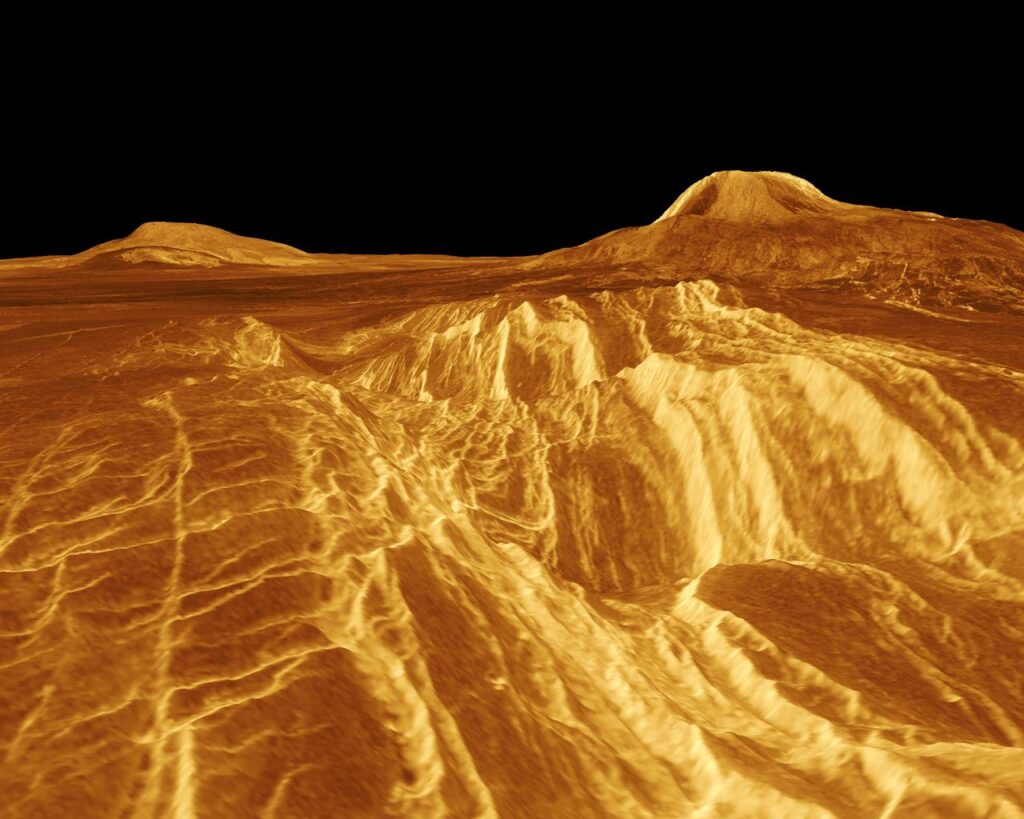
This sequence—slow, relentless, and devastating—paints a grim portrait of planetary transformation. It also serves as a stark warning: the same fate could await Earth.
If solar brightening continues, Earth too will be pushed out of the habitable zone. Oceans will boil, water vapor will rise, and the greenhouse effect will intensify beyond control. Within a billion years, the Earth may follow Venus down the same catastrophic path. This isn’t distant science fiction. The mechanisms are well understood.
In this context, Mars takes on renewed significance. While more distant and currently uninhabitable, Mars will eventually migrate into the Sun’s expanding habitable zone. In the far future, it could become the new cradle of life—our next Earth.
And this is one reason humanity has invested more attention in Mars exploration. In cosmic terms, it buys us time. Earth’s descent into a Venusian state won’t happen overnight. But some fear that our own actions—particularly the continued burning of fossil fuels—may accelerate that trajectory.
The persistent injection of carbon into Earth’s atmosphere is already altering climate systems. If left unchecked, we risk triggering feedback loops that mirror those seen on Venus—only faster, because our window for mitigation is narrower. Venus’ transition took hundreds of millions of years. Ours may unfold in centuries.
Some researchers remain cautiously optimistic. They argue that Venus’ catastrophe may have hinged on unlucky initial conditions rather than inevitability. After all, warming alone may not fully explain the disappearance of Venusian oceans or the planet’s overwhelming CO₂ content.
Alternative theories propose sudden and radical geological changes originating in Venus’ core. Others suggest that Venus may have experienced an orbital perturbation caused by a now-absent planetary neighbor, destabilizing its evolution. While speculative, these ideas highlight just how little we truly understand about planetary climate collapse.
Even if Earth is destined to follow in Venus’ footsteps, we may yet have time. Advances in climate modeling and solar physics may eventually allow us to predict—and delay—our fate. As Stephen Hawking warned, our dependence on fossil fuels and inaction on climate policy may transform Earth into a second Venus. But even without anthropogenic effects, time alone will bring that future closer.
The silver lining is that by then, humanity’s technology may have evolved far beyond our current limits. We may be capable of migrating to Mars—or even beyond the solar system. Mars may offer only a temporary reprieve, however. As the habitable zone continues to expand outward, even it will one day become inhospitable.
In the end, we may need to engineer new planetary environments, migrate between stars, or transcend biology altogether. While such scenarios remain speculative, the slow and silent metamorphosis of Venus into a hell world reminds us that no world, not even Earth, is immune to time.
Ironically, Venus—our nearest planetary neighbor and, in theory, the most accessible target for interplanetary missions—is perhaps the least hospitable world in the solar system. It lures us with its resemblance to Earth, only to repel us with a reality shaped by heat, pressure, and corrosive clouds. Its brilliance in the night sky belies an unforgiving truth.
Yet what remains is curiosity. We will continue to dispatch orbiters, gather remote data, and imagine new ways to study this alien world from afar. For the foreseeable future, however, Venus’ surface remains off-limits to human exploration.
This, in turn, casts Earth in a more precious light: a rare oasis amid a cosmos of extremes. Surrounded by inhospitable siblings, our planet is a fragile exception—a balance of conditions so precise that it permits life to flourish. Venus, both a twin and a warning, reminds us how easily that balance can tip.
In the shadow of its fiery mirror, we glimpse not only the fate of another world, but perhaps—given time—our own.

